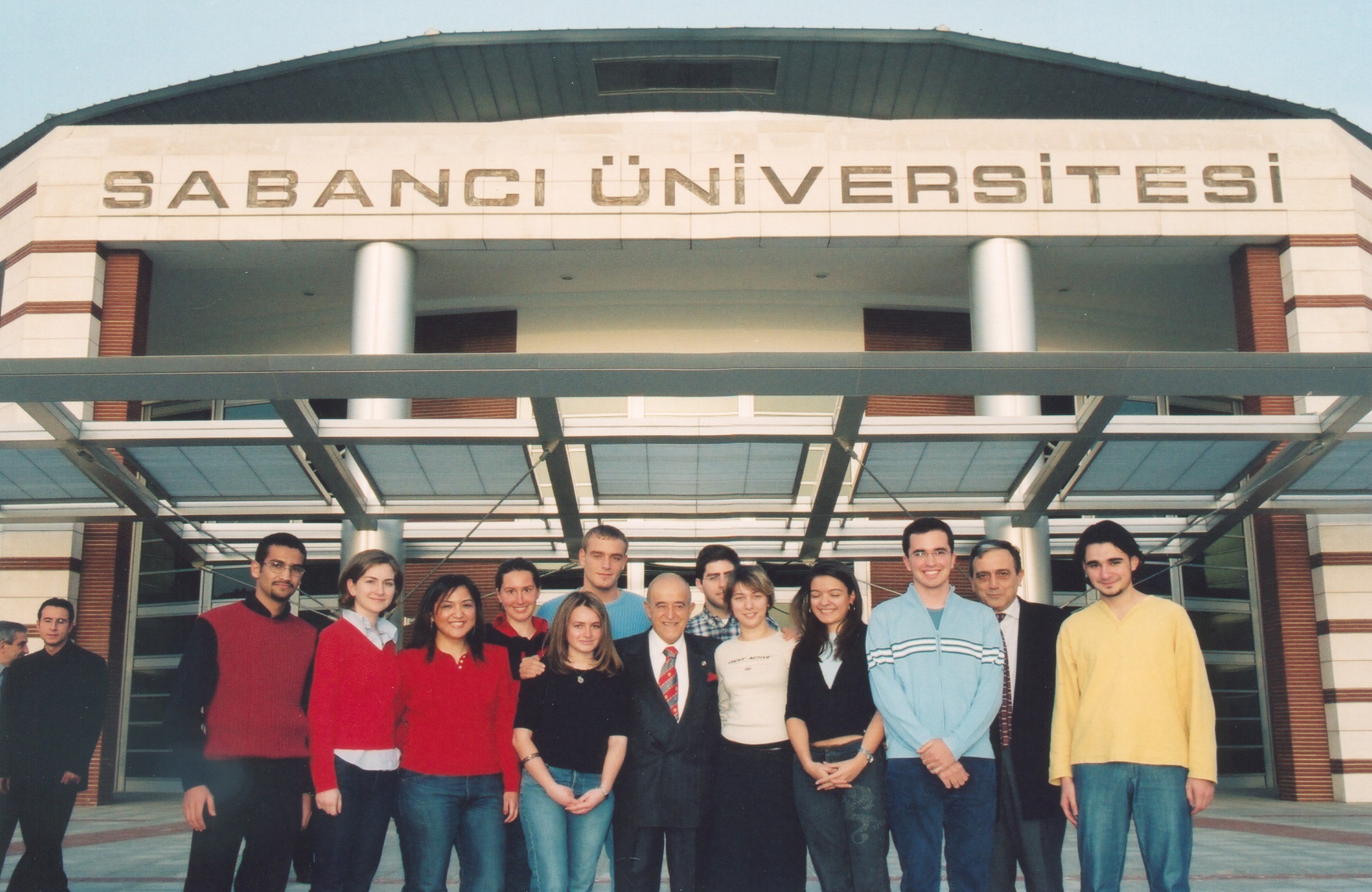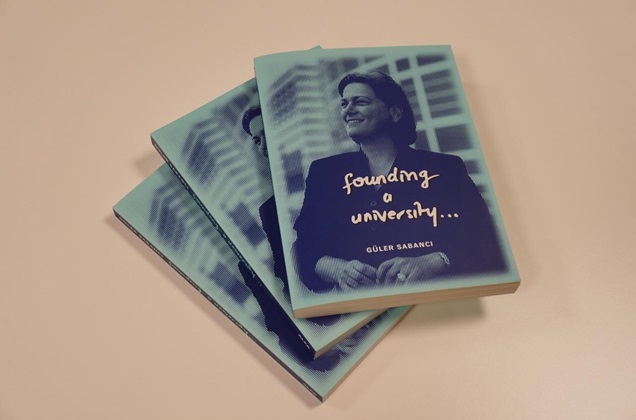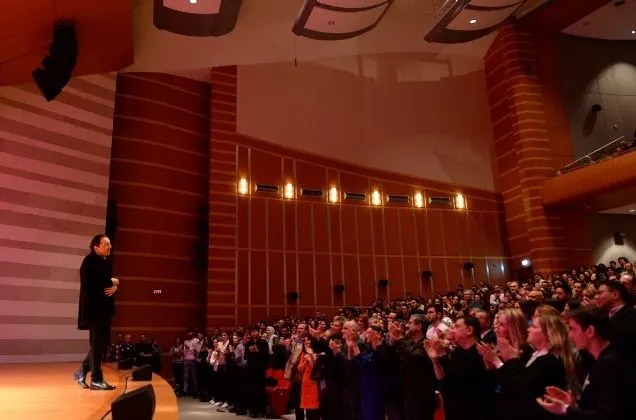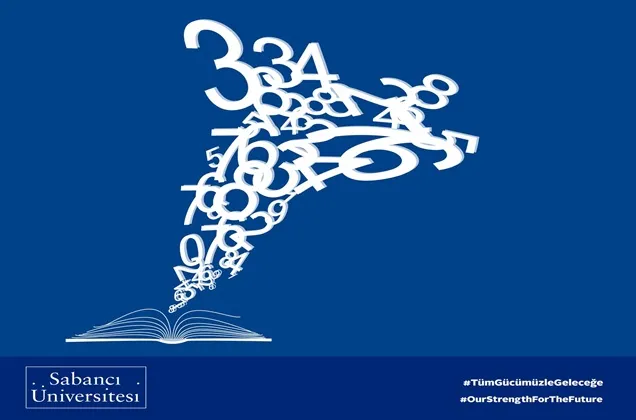18/09/2025
As Sabancı University celebrates its 25th anniversary, it revisits its roots and the story of its founding. This special feature is compiled from the book "Founding a University," written by Güler Sabancı, Chair of the Sabancı University Board of Trustees, which provides anecdotal accounts of our university's founding, vision, and development journey.
Through various events selected from the book, we share with you some lesser-known, yet thought-provoking and inspiring details from Sabancı University's journey from its initial conception to the present day.
- The idea of establishing Sabancı University was conceived during family gatherings held every Sunday in the 1980s at the home of the late Sadıka Sabancı, founder of the Hacı Ömer Sabancı Foundation (Sabancı Foundation)!
- During the initial stage of the university's spatial planning, the proposal that the university should have no building at all and be entirely online was considered—years before the concept of online education became popular!
- Sabancı University's architectural design was inspired by Topkapı Palace; Sakıp Sabancı's mandate was clear: "This is Sinan's country; let us be worthy of him!"
- The President’s Office Building was designed as the smallest building on campus, with a view to emphasizing the equality of academic and administrative life at the university!
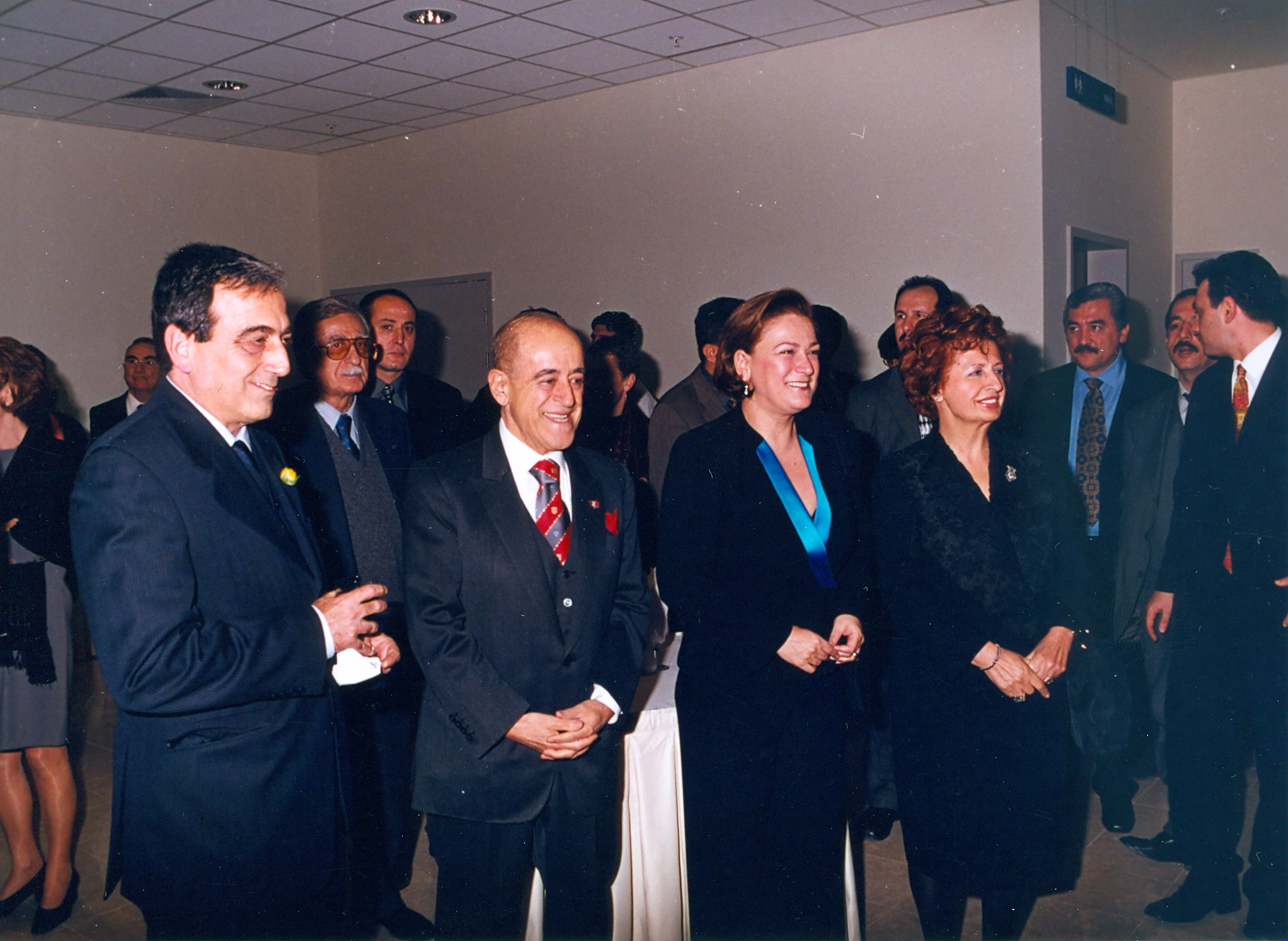
- The university's philosophy was shaped at a three-day "Search Conference" attended by over 50 experts from 22 countries, even before a single building was designed! This founding philosophy remains the same today: "Creating and developing together."
- The groundbreaking ceremony was held virtually, long before the concept of "going virtual" became popular! The groundbreaking ceremony for the Tuzla campus took place not on site in 1997, but at the Lütfi Kırdar Congress Center, where Sakıp Sabancı and then-President Süleyman Demirel pressed a specially prepared button. Images from the muddy field were broadcast live on a giant screen.
- In the 1990s, Sabancı University became the first university in Turkey to distribute free personal computers to all 250 students who managed to enter the university!
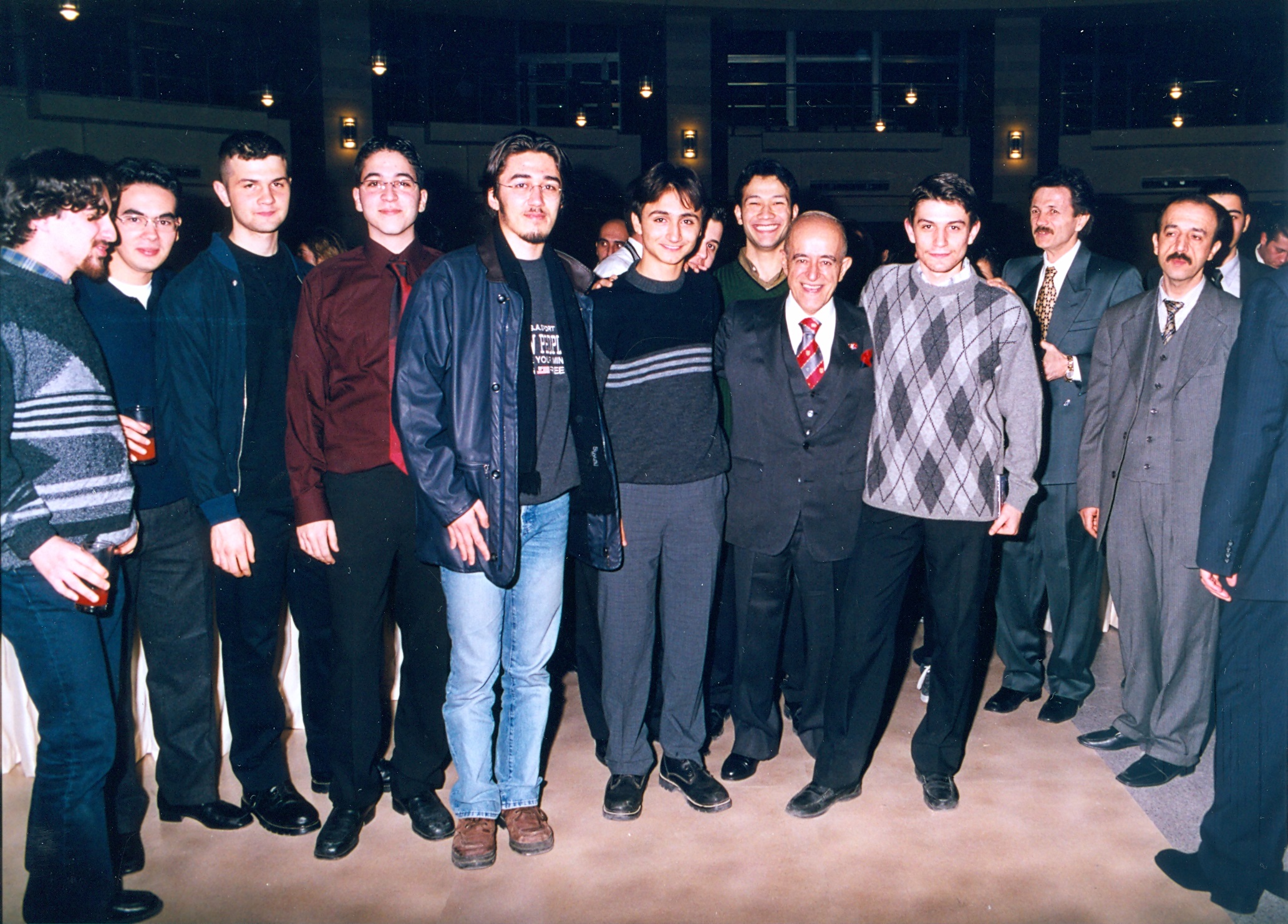
- The lush green campus, once a dusty gravel pit, has been completely reshaped using environmentally friendly gardening and recycled water.
- An unconventional approach: From the very beginning, Sabancı University decided not to use titles like "Prof." or "Dr." on its business cards; only the name and the term "faculty member" were included.
- During the founding president selection process, when Işık İnselbağ, Güler Sabancı's first candidate, suffered a heart attack, last-minute crisis management was carried out to find a new leader. Ultimately, Tosun Terzioğlu, the son of a professor mother and a professor father, who grew up surrounded by conversations about "What would an ideal university be like?", and who also served as President of TÜBİTAK from 1992 to 1997, took office as our university's first president.
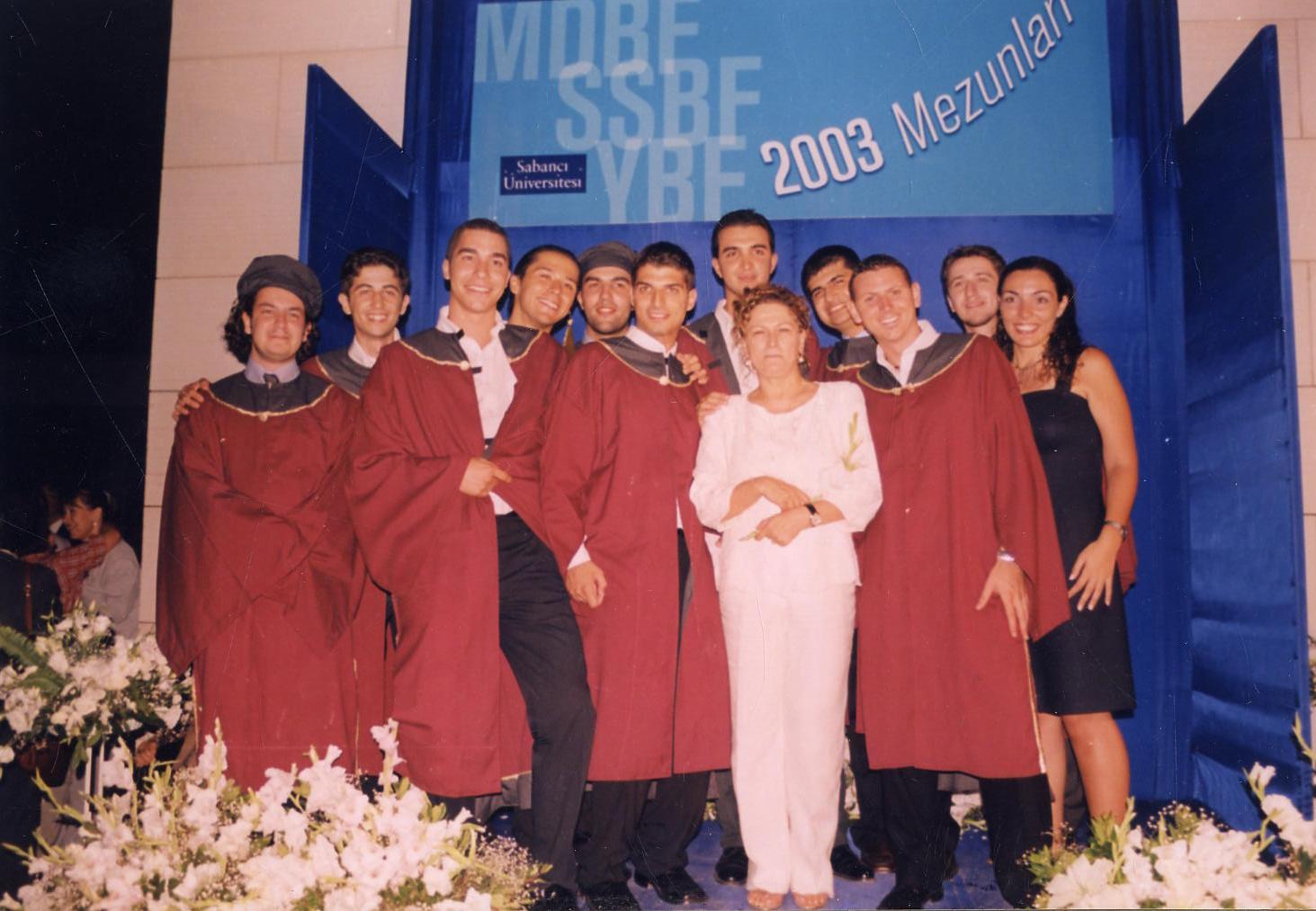
Graduate and First Undergraduate Graduation Ceremony - 2002-2003 - At the first commencement ceremony, Sakıp Sabancı danced with the graduates to Latin music; this moment is etched in our memories as the last celebration he spent with the students.
- In the university's early years, the temporary campus at Minerva Han in Karaköy became so well-received that when it was time to move to the Gebze campus, no one wanted to leave. The Faculty of Engineering and Natural Sciences and the Faculty of Arts and Social Sciences moved onto the campus together, while the Business School, because its building was not yet completed, remained in Minerva Han for a while longer. Upon moving to campus, everyone gathered in the Information Center building and shared lunch in a tiny on-site cafeteria. This simple and temporary arrangement helped share not only the space but also the vision: the theoretical framework of interdisciplinary education began to materialize through this shared daily life.
- When the university was being planned, it was initially anticipated that everything would cost $150 million. However, due to infrastructure investments such as the underground ring system connecting all buildings, despite the sloping terrain, this figure surpassed $500 million. The relevance of this high cost was proven by the August 17 earthquake, which occurred just before the campus opened. Despite its proximity to the city center, the campus sustained no damage.
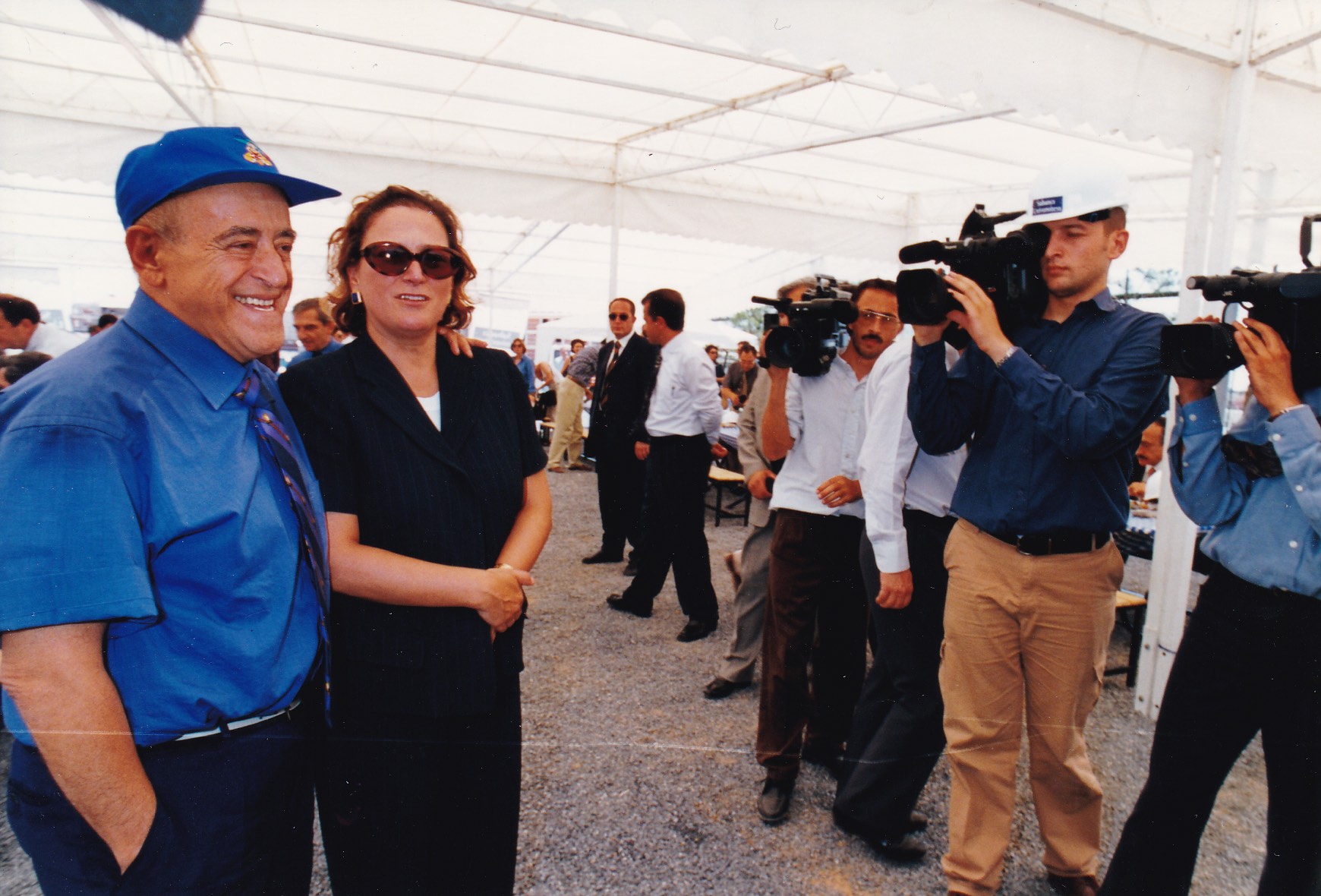
- The beautiful sakura trees on campus are actually very special guests from Japan! In 2006, Komatsu's president, Masahiro Sakane, explained his company's efforts to preserve the genetic purity of sakura trees in collaboration with the Universities of Kyoto and Tokyo at a private dinner with partners. Upon learning that they only donated trees to nonprofit institutions, Güler Sabancı immediately declared, "We have a university too!" Thus began the process, and an agreement was reached to send 2,500 sakura trees to Sabancı University. The first 200 were planted with the participation of a panel of three Japanese experts, who personally planted the first 200. It took three to four years to complete the 2,500, and a full 10 years for the trees to bloom. In the spring of 2017, the campus was captivated by the first blooming of sakura trees. Today, nearly 2,000 sakura trees thrive, adding a unique beauty to the campus's spring landscape.

- The campus "lake" was created by converting a former gravel pit using collected wastewater, but the theme doesn't end there! Sabancı University was built from the ground up with ecological materials whenever possible: old travertine and reclaimed wood were carefully selected. The most recent building, SUNUM (Sabancı University Nanotechnology Research and Application Center), was designed with the same environmental sensitivity.
- Sabancı University broke new ground not only in its educational model but also by establishing an international board of overseers. In its early years, the board was joined by world-renowned figures such as DuPont CEO Chad Holliday, leaders of major corporations such as Toyota, Bekaert, and Deutsche Bank, Oxford Chancellor Lord Chris Patten, MIT Chancellor Susan Hockfield, Lady Barbara Thomas Judge, Candace Johnson, Prof. David Pines, Richard Christou, Dr. Katsuhiko Yamashita, and John V. Faraci. While touring the campus, Holliday was surprised to see only 250 students, but after listening to them, he noted: “Follow these students; they will be agents of change.”
